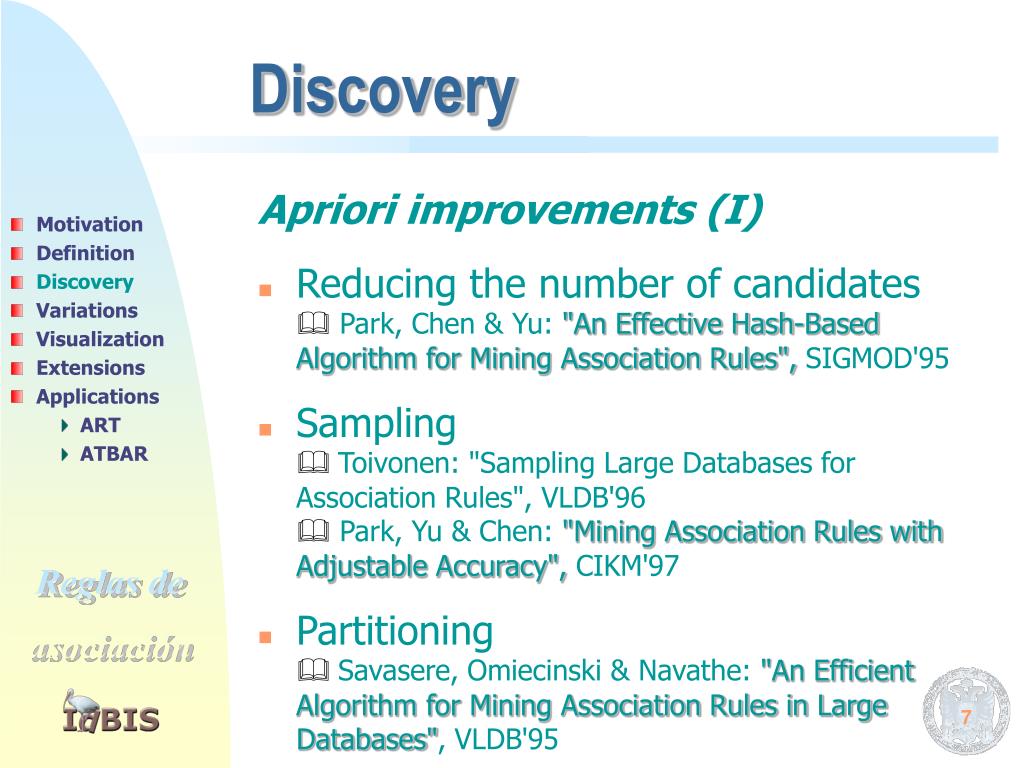Apriori algorithm agrawal
It is an iterative approach to discover the most frequent itemsets. Apriori algorithm is given by R. This is a preview of subscription content, to check access. We shall now explore the apriori algorithm implementation in detail. All these algorithms provide ways to create rules on associated attributes. Use the large itemsets to generate the desired rules.
Here is a straightforward algorithm for this task. For every large itemset find all non-empty subsets of 1. F or ev ery large itemset l, nd all non-empt y subsets of l. With the help of these association rule, it determines how strongly or how weakly two objects are connected. It is the iterative process for finding the frequent itemsets from the large dataset. This algorithm uses a breadth-first search and Hash Tree to calculate the itemset associations efficiently. Several parallel implementations have been proposed for this algorithm.
This implementation is pretty fast as it uses a prefix tree to organize the counters for the item sets. A transaction T contains X, a set of some items in I, if X ? APRIORI ALGORITHInput The market base transaction dataset. Procedure The first pass of the algorithm counts item occurrences to determine large 1-itemsets.

This process is repeat until no new large 1-itemsets are identified. An algorithm for nding all asso ciation rules henceforth referred to as the AIS. A minimum threshold is set on the expert advice or user understanding. Let’s put it into an example. The code is stable and in widespread use.
It is devised to operate on a database containing a lot of transactions, for instance, items brought by customers in a store. It is used for mining frequent itemsets and relevant association rules. Association rule learning is a rule-based machine learning method for discovering interesting relations between variables in large databases.

It is intended to identify strong rules discovered in databases using some measures of interestingness. Based on the concept of strong rules, Rakesh Agrawal, Tomasz Imieliński and Arun Swami introduced association rules for discovering regularities between products in large-scale transaction data recorded by point-of-sale systems in supermarkets. The name of algorithm is based on the fact that the algorithm uses prior knowledge of frequent item set properties. Iteratively reduces the minimum support until it finds the required number of rules with the given minimum confidence.
With the quick growth in e-commerce applications, there is an accumulation vast quantity of data in months not in years. The algorithm has an option to mine class association rules. Data Mining, also known as Knowledge Discovery in Databases(KDD), to find anomalies, correlations, patterns, and trends to predict outcomes.

It makes use of the downward closure property. This alogorithm finds the frequent itemsets using candidaate generation. As each level is processe candidates are added as a new level of the T-tree, their support is counte and those that do not reach the required threshold of support are subsequently pruned.
I chose to instead create a simple implementation of the original algorithm. A little background. The name of the algorithm comes after a prior knowledge about frequent itemsets was used.
The prior knowledge is that any non-empty subset of a frequent itemset is also frequent. The support of an itemset is defined as the frequency that occurs in all transactions.
Comments
Post a Comment